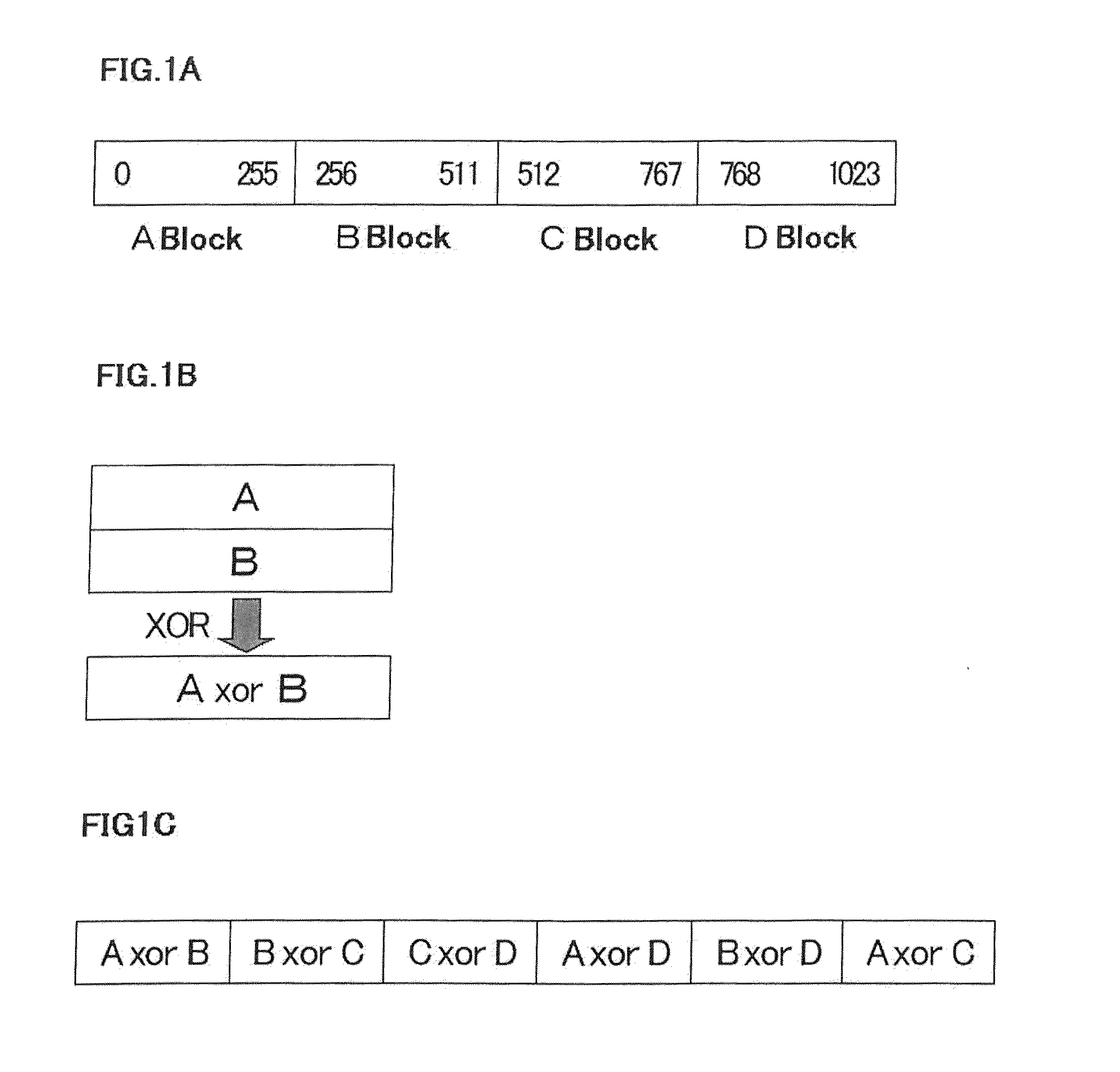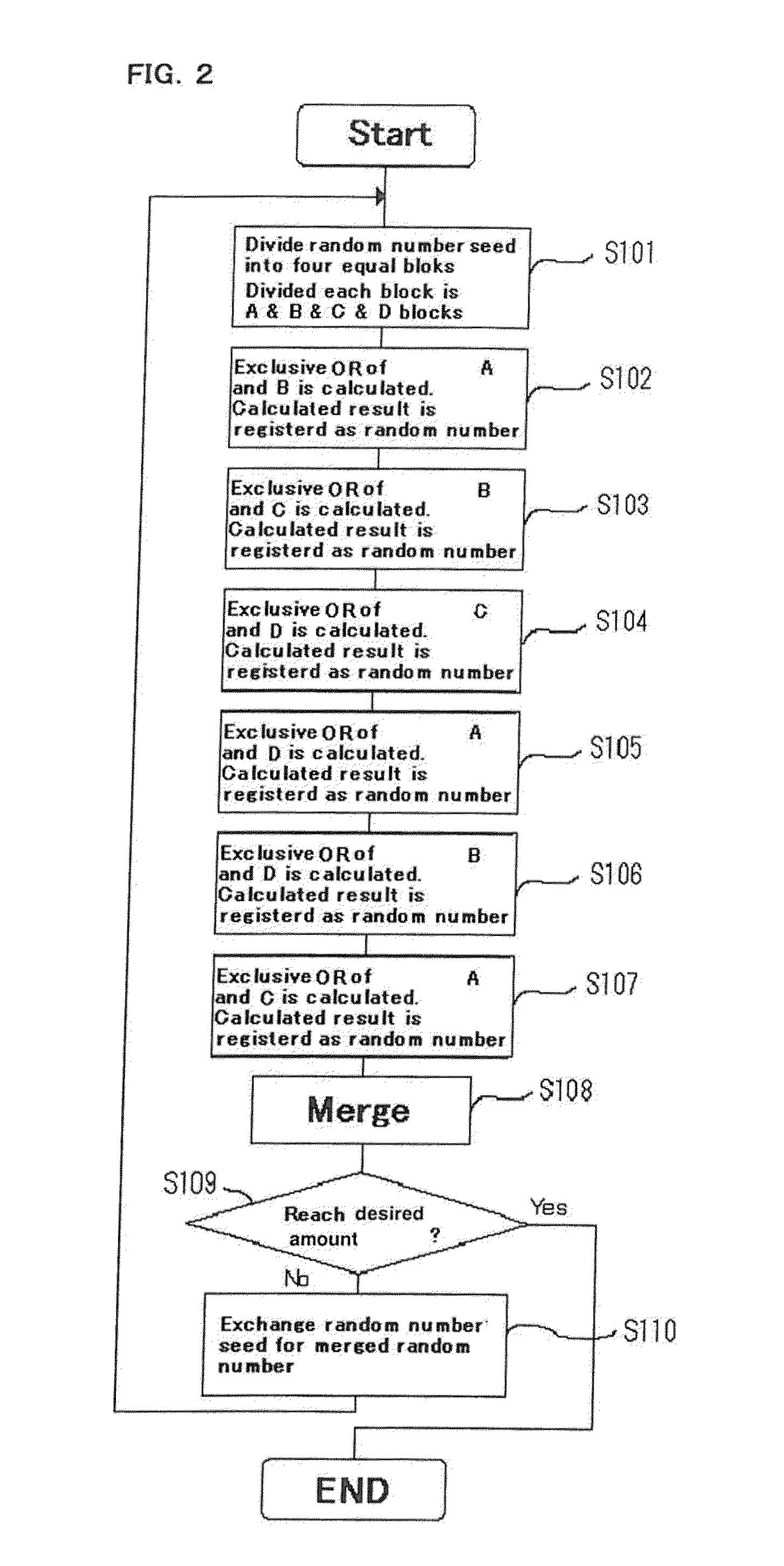Method and device for generating pseudorandom number, and method and device for encryption using pseudorandom number
a technology of pseudorandom number and method, which is applied in the direction of selective content distribution, unauthorized memory use protection, instruments, etc., can solve the problems of loss of effectiveness of encryption, difficulty in hardware realization, and inability to generate pseudorandom number according to the above-mentioned method (4), so as to maintain the security of encryption and small working memory
- Summary
- Abstract
- Description
- Claims
- Application Information
AI Technical Summary
Benefits of technology
Problems solved by technology
Method used
Image
Examples
Embodiment Construction
[0033]First, description is made of one embodiment of pseudo-random number generating method of the present invention. In this method, a pseudo-random number of a desired number of bytes is generated by extending a random number of a predetermined number of bytes. (An initial random number before the extension is called as a seed.) Concrete procedures for the method are described with reference to FIGS. 1A to 1C as hereinbelow.
[0034]First, a seed is divided into four partitions (see FIG. 1A) (in the present invention, the number of divisions is not limited in particular). For example, in a case of seed of 1024 bytes, the seed is divided into quarters, that is, four blocks each having 256 bytes. Hereinafter, these blocks are defined as A, B, C and D blocks sequentially from the top.
[0035]Next, by calculating an exclusive-OR (XOR) of the blocks (for example, A block and B block) to create a new block (A XOR B) as a result (see FIG. 1B).
[0036]Then, a predetermined function operation is...
PUM
 Login to View More
Login to View More Abstract
Description
Claims
Application Information
 Login to View More
Login to View More - R&D
- Intellectual Property
- Life Sciences
- Materials
- Tech Scout
- Unparalleled Data Quality
- Higher Quality Content
- 60% Fewer Hallucinations
Browse by: Latest US Patents, China's latest patents, Technical Efficacy Thesaurus, Application Domain, Technology Topic, Popular Technical Reports.
© 2025 PatSnap. All rights reserved.Legal|Privacy policy|Modern Slavery Act Transparency Statement|Sitemap|About US| Contact US: help@patsnap.com



